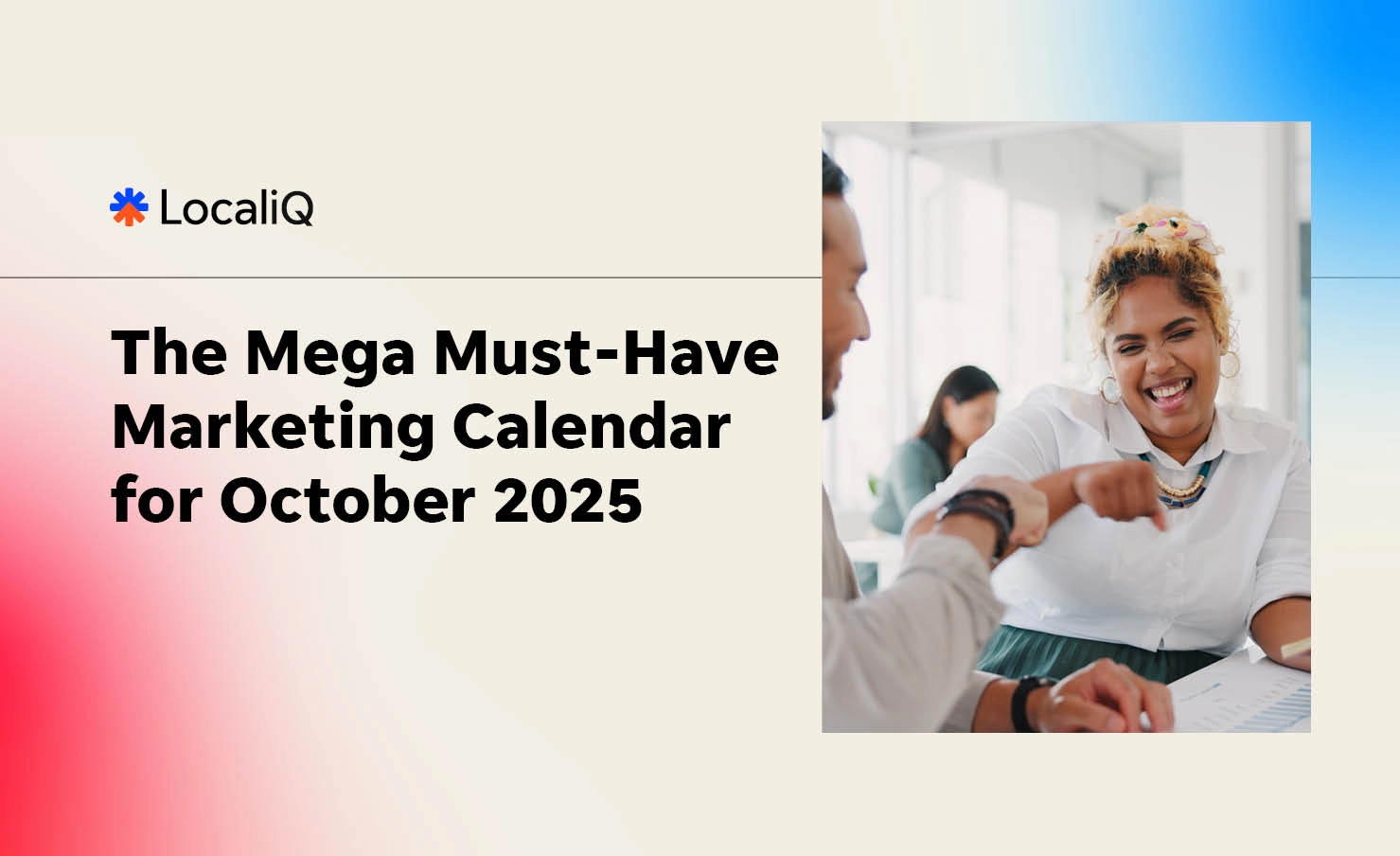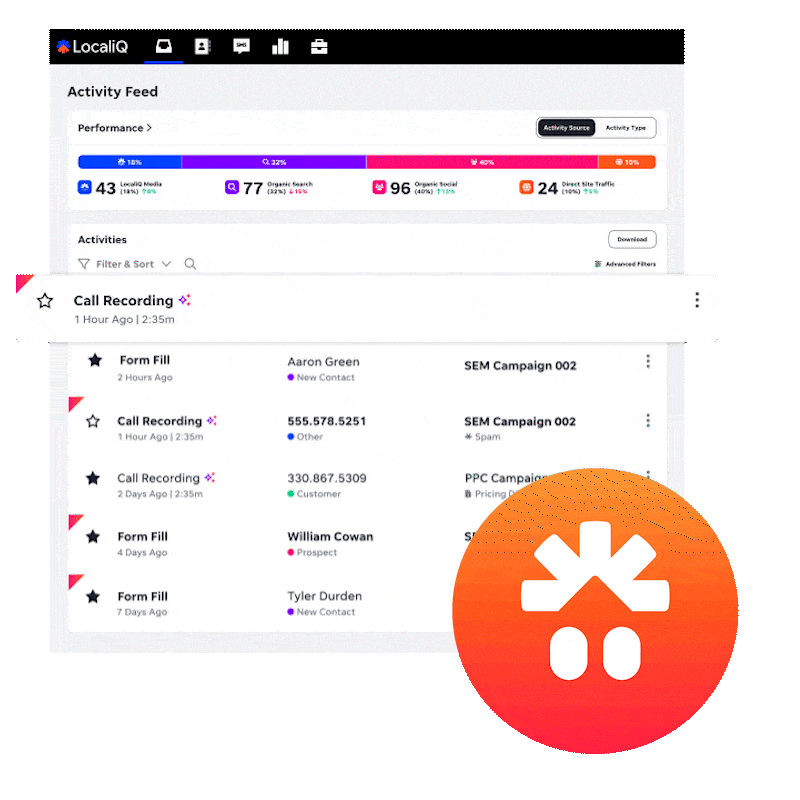Most people still use Google to find and evaluate businesses, but they won’t scroll past the first page of results.
That leaves precious few top spots on search engine results pages. Nabbing one for your business can feel impossible. We’re here to tell you emphatically that you can do it! And you don’t have to spend a lot (or anything) in the process.
In this guide, we’ll show you how to rank higher on Google using five steps anyone can follow. Give them a try, and you’ll quickly start owning those Google results pages.
How does Google ranking work?
Google’s stated purpose is “to present the most relevant, useful results.” It does that by reviewing webpages to understand their content, how trustworthy they are, and how helpful they will be to people searching a particular query.
Reviewing billions of websites is no easy task. Google does it by sending out crawlers—automated programs that discover and scan web pages. Google uses complex and ever-updating algorithms to assess the content of each page, eventually deciding which ones are the best match for specific queries on its site.
Google uses a long list of ranking factors to determine which order websites land on search engine result pages. We won’t list them all here (you can see a few from this Google algorithm leak), but in general, you want to make sure your web pages:
- Are relevant to the terms people use to search
- Present you as a trustworthy and knowledgeable source
- Are updated with new content regularly
- Provide a good user experience
How to rank higher on Google:
With the goals outlined above in mind, here are five free tactics that will help Google rank your website higher in search results.
1. Use the right keywords
Keywords are the words you enter into a search engine to find what you’re looking for. When you hit enter, Google scans its index of billions of websites to find the pages that best match the query. It then ranks those pages, in large part, based on their relevance to the keywords. That’s why when you search “cat groomers near me,” you won’t see a list of milkshake recipes on the results page.
Your first job is keyword research, the practice of figuring out which keywords your target customer uses to learn about topics related to your product and business. Then, you’ll need to place those keywords strategically.
👋 Use this Complete Guide to Local Keywords to find exactly what your customers are searching for.
Create a list of seed keywords
Keyword research can get complicated fast. Start by writing a list of terms people might search to find your business and learn about related topics.
If we’re using Google to market a cat grooming business, that might look like:
- Cat groomers in Seattle
- Cat Supplies Warehouse
- Best cat brushes
- Where can I buy cat nail trimmers online
- How to give a cat a bath
- How to treat scratches from a cat
Create a list of 20 to 30 of these terms. It’s okay if they’re not perfect. In a minute, we’ll find the exact versions people use on Google.
Understand keyword intent
One way we’ll refine the seed list is to understand the keyword intent behind each search term.
Generally speaking, there are four types of keyword intent: Informational, Commercial, Transactional, and Navigational. Notice how each intent comes with a different set of expectations.
Here’s the intent behind our cat grooming keywords:
- Cat groomers in Seattle (commercial)
- Cat Supplies Warehouse (navigational)
- Best cat brushes (commercial)
- Where can I buy cat nail trimmers online (transactional)
- How to bath a cat (informational)
- How to treat scratches from a cat (informational)
Your goal is to match the type of content to the searchers’ intent. People searching for “cat groomers in Seattle” want to find a place that provides that service; a sales page or ad for your office will meet that intent. While the page you create for “How to give a cat a bath” should be an instructional blog post or video rather than a sales message.
Some keywords can have multiple intents. Take “cat grooming,” for example. It could be people looking for cat groomers, people who want to learn how to groom their cats, or people looking for an exciting career in the feline grooming arts.
Reading the Google results can help you understand the real intent. If the top results for a keyword are informational blog posts, then you should create the same or target another keyword.
Use a keyword tool
Now, we’re ready to use keyword suggestion tools to find new keywords and qualify the ones you’ve already come up with.
Enter one of your seed keywords into the tool. It’ll surface a list of related keywords and show how many people search for it monthly (known as “search volume”). You’ll also see the competition level (how difficult it is to rank for that keyword).
Keyword suggestions with difficulty and search volume as shown on WordStream’s Free Keyword Tool.
Ideally, you want to target keywords with high search volume but low to moderate competition.
Keyword research tools can help you prioritize which keywords to target and generate new ideas for additional content.
🛑 Try some keyword research for yourself with the Free Keyword Tool from WordStream.
Don’t forget local keywords
Nearly a third of people use Google to find local businesses multiple times weekly. Local keywords are the terms people use in those geographically dependant queries.
For example, when someone wants to hire a cat groomer, they might search for:
- Cat groomers near me
- Cat groomers in Seattle
- Seattle cat grooming services
Not all local keywords will have a geographic modifier. If you search for “cat groomers,” for example, Google understands that you probably want local service providers. The results page shows cat groomers near your location.
Local keyword research is similar to other keyword research with one exception. Local keywords usually have a transactional or commercial intent, meaning the people searching want to learn about products and services. Your seed keywords should revolve around what you provide and where you provide it.
Place keywords in the right places
Placing keywords strategically will help Google quickly understand and categorize your web pages. Make sure to include keywords in:
- The page title and title tags
- Headings and subheadings
- URL of the page
- Body of the content
Keyword placement is an integral part of on-page SEO: the collection of things you do to your web pages so they have the best chance of ranking. We’ll discuss off-page SEO when we discuss backlinks.
2. Fill your site with high-quality content
The more content you place on your website, the more helpful it will be to your audience, and the more you will convince Google that it belongs at the top of a search result.
But you can’t just write anything. What you publish must be genuinely helpful and high-quality, or Google will not show your site to searchers.
Focus on evergreen content
It’s good to keep your readers informed about industry news and updates. But the majority of your content should be evergreen—that is, content based on topics that are relevant for a long time and are searched for over and over again. This type of content will steadily gain traffic over time rather than spike and flatten out quickly.
Purina has an extensive blog of evergreen articles that are helpful to its target audience.
Examples of evergreen content include:
- Tutorials and how-tos
- 101’s on fundamental industry concepts
- Case studies and success stories
- Tips and tricks
- Checklists
- Best practices
- Tool and resource lists
- Common mistakes/dos and don’ts
- FAQs
Look at your competitors and the brands you trust to find content ideas and examples.
3. Get more links
Creating links between pages on and off your website is an important step to ranking higher on Google for two reasons. First, internal links help Google crawl and understand your website better. Second, external links help prove to Google that your website has authority among others in your area of expertise.
Create internal links
Internal links connect different pages of your website to make it easier for visitors and Google to navigate between them.
A clear internal link will tell visitors how to do the next thing they want to do, improving their experience and keeping them on your website longer.
For Google, internal links help crawlers find all of the pages on your website. If a page is on a link-free island, the crawler might not see it.
Links also help Google understand the relevance and context of your web pages. For example, if you have several blog posts covering niche cat grooming topics, internally linking them helps Google understand that they all add up to your expertise in that area.
You can add internal links in menus, footers, sidebars, and each piece of content.
Try to add several internal links in the body copy of each blog post to show Google how they’re all connected.
A good goal is to make sure you can reach any page of your website in three clicks from any other page.
Get external links
External links, or backlinks, are links between web pages not on the same website. Since backlinks come from a place other than your own web pages, getting them is called off-page SEO. They’re an important part of your search engine optimization strategy because they help prove your site’s authority to Google.
External links, or backlinks, help build your website’s authority.
But more backlinks aren’t always better. You want links from other credible websites. That’s because Google is smart enough to sniff black-hat SEO tactics like link schemes (where people pay for a bunch of links from low-quality pages).
Here’s how that works. Say you publish a great article explaining a new way to trim a cat’s nails. Several veterinary offices, a vet-tech accreditation website, and some cat food and supply companies link to it. Google knows these sites are legit and that they wouldn’t link to bad content. It now has more trust in the article you posted and on your website.
Link-building strategies, like promoting your content or getting listed in free directories, can help you get more backlinks. But it all starts with creating original, high-quality content people want to link to.
Optimise your Google Business Profile
Your web pages aren’t the only things that can surface in a Google search. Google Business Profiles (GBP) also appear at the top, especially for local businesses.
Google Business Profiles are the top results for most local searches.
In addition to optimising your website to rank higher in search results, you also need to optimize your Google Business Profile to rank. The higher it shows in local results, the more customers you can get from Google. Follow these tips to make sure your GBP is the first one people see.
Fill out your profile completely
Google will automatically create a business profile. That’s convenient, but it may not have the most up-to-date information. And it certainly won’t add all the extras that make the profile attractive to searchers.
Before sprucing up your profile, you must claim and verify it. Then, fill out as many of the fields as possible, including:
- Business name
- Address
- Phone number
- Hours of operation
- Category
- Website
- From the business
- Questions and answers
- Photos
- Reviews
- Posts
Additional fields may be required for specific industries, such as products, appointment bookings, or reservation options.
Rank your business higher on Google with these free strategies
Getting found on search engines should be a high priority for every business. Since most people won’t scroll past the first page of results, you’ll need to rank highly to get their clicks. The good news is that you don’t need to be super technical or have a huge budget to do it. Just follow the above steps and you will be ready to go!






